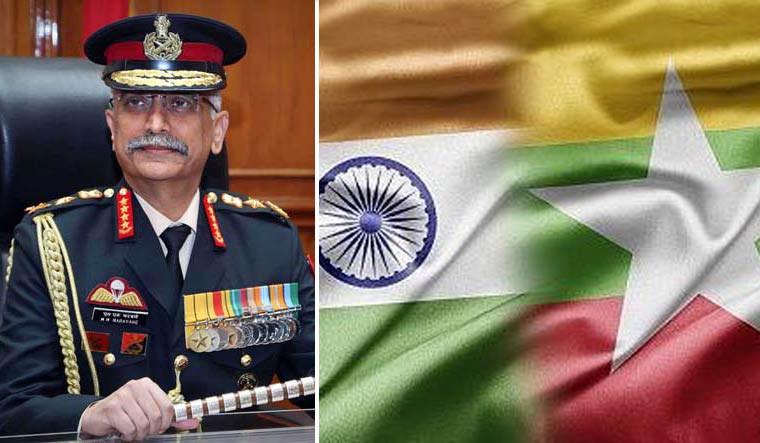With an eye on keeping the neighbourhood friendly during a fraught time with China in Ladakh, Army chief M.M. Naravane and Foreign Secretary Harsh Vardhan Shringla are headed to Myanmar for a two-day visit from October 4 to 5. This is a rare, high-powered delegation visit, and the first one since the lockdown. They will call upon State Counsellor Aung San Suu Kyi and the commander in chief of the Myanmar Armed Forces Senior General Min Aung Hlaing.
The visit follows the 19th round of foreign office consultations between the two countries, held virtually, on Thursday during which Shringla, who presided on the Indian side, had underscored the importance India gave its Neighbourhood First and Act India policies.
There had been buzz about Shringla's visit to Myanmar ever since he travelled to Dhaka in August. At a recent talk, Shringla said that while virtual meets were a necessity, they could not replace the in-person meetings that are so important in diplomacy.
During the last half-year, India's neighbourhood remained troubled with both Nepal and Bangladesh demanding attention or reeling under perceived slights, while Pakistan continued its hostilities along the border and on international platforms, and the situation with China turned deadly with loss of lives on both sides. Myanmar, however, remained out of the bad news. As an important neighbour, however, it requires attention, especially in these times.
The presence of the army chief in the delegation means that security ties will be discussed and strengthened. India shares a border of over 1,400km with Myanmar and the country has helped the Indian army in the past in tackling insurgents. Connectivity will also be a big part of the talks, with the Sittwe port set to get operational. This port, like the Chhatogram port in Bangladesh, helps India in reaching out to its distant corners in the northeast, which are easier accessed through the neighbouring countries.
China is a very important player in Myanmar, and it is seeking to build a China-Myanmar Economic Corridor, which will give the dragon access right into the Bay of Bengal. India is keen to counter the Chinese influence, at least partially.
The ties between the two countries have been strengthened over the last few years, and Myanmar is a beneficiary of many of India's development cooperation projects, under which India is investing $ 1.4 billion in several connectivity projects like the Kaladan Multi-Modal Transit Transport Project and Trilateral Highway, connecting Myanmar to Thailand and India.
India has a special focus on the Rakhine state, from where the Rohingyas have been fleeing to Bangladesh, thus creating regional instability. India, which supports “safe, sustainable and speedy repatriation” of these people back to Rakhine state has been working with both governments in this regard. It has provided five tranches of relief material to Bangladesh for the purpose and has also extended socio-economic development assistance for several projects in the region. It has also proposed a skills training centre in Rakhine.
The two countries have a Border Area Development pact which was inked during prime minister Narendra Modi's visit in 2012 under which 140 projects have been completed. These include bridges, roads, schools and health care centres in the Chin State and Naga Self Administered Zone.
India is also working on strengthening cultural and historical ties. The Archaeological Survey of India has restored the Ananda Temple in Bagan and renovated the stone inscription temples and Zayat of King Bagyidaw and King Mindon at Bodh Gaya.






